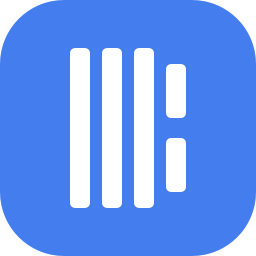Original compilation: 0x214, BlockBeats
Original compilation: 0x214, BlockBeats
On October 19, the Monetary Authority of Singapore (MAS) announced the launch of the "Project Guardian" (Project Guardian), which will cooperate with the financial industry to test the feasibility of asset tokenization and DeFi applications. Risk control for stability and integrity.
On November 2, MAS announced that its Project Guardian's first industry pilot project (First Industry Pilot) to explore potential DeFi applications in the wholesale financing market has completed its first real-time transaction. Among them, DBS Bank (DBS Bank), JP Morgan (JP Morgan) and SBI Digital Asset Holdings conducted a liquidity pool consisting of Tokenized Singapore government bonds, Japanese government bonds, Japanese yen (JPY) and Singapore dollar (SGD). Forex and government bond trading. The pilot successfully conducted a real-time cross-currency transaction involving tokenized yen and Singapore dollar deposits.
Ty Lobban, director of JPMorgan Chase's Blockchain Launch and Onyx digital assets department, and member of the board of directors of the Enterprise Ethereum Alliance (Enterprise Ethereum Alliance), published an article explaining in detail what role JPMorgan Chase plays in Project Guardian, and BlockBeats translated it as follows:
JP Morgan has used DeFi, tokenized deposits and Verifiable Credentials (Verifiable Credentials, VC) to execute the first real-time transaction on the public chain, which is part of the MAS-led Project Guardian.
We have created many world precedents. Since the transaction occurs on the public chain, this article will openly and transparently explain what we have done.

In the first step, we use the Polygon network to conduct transactions.
We originally wanted to perform this transaction on Ethereum, but since we wanted to perform a series of expensive authentication-related operations with relatively low gas fees, (we chose Polygon). Of course, given that the goal of MAS is an open and interoperable network, Guardian will also explore the possibility of other blockchains in the future.
In the second step, we use Aave to adopt its "permission pool concept".
LinkLinkCheck out our deployed lending pool.
BlockBeats Note: Aave Arc is a permission-requiring liquidity pool designed specifically for institutions to maintain regulatory compliance in the DeFi field. These liquidity pools will be separate from existing pools on Aave and will require extensive KYC.
In the third step, we issued tokenized SGD deposits.
LinkLinkCheck out the SGD Tokenized deposit contract issued by JPMorgan Chase.
In the fourth step, we provide compliant access to Aave (or any other DeFi protocol) using the World Wide Web Consortium W3C Verifiable Certificate VC.
Compared with whitelist addresses, VC can provide more fine-grained control, including risk restrictions, asset restrictions, etc. Moreover, we have implemented on-chain VC authentication.
On-chain VC verification is very complex, and it brings composability to identities. We hope to bring further standardization and portability to identity by using a small number of professional validators and using them in dApps, like "identity Lego bricks"!
The principle of our design is to ensure that VC compliance checks can be used with any DeFi protocol that does not need to know anything about VCs, making KYC unnecessary for DeFi front-ends. Compliance is pushed to the edge, not dApps.
LinkLinkCheck out validators. We created a validator for each company in Project Guardian. So each company has its own rules, but anyone can review and verify these rules. Strictly speaking, the VC verification on the chain is not pioneered by us. My construction is not perfect and I am still exploring ZKP technology.
Additional note: As a strictly regulated bank, JPMorgan Chase prohibits money laundering, so KYC is necessary. Considering the above problems, we hope to improve the security of our DeFi fund pool by using VC and whitelist. Institutional DeFi is worth looking forward to.
In the fifth step, we built an institutional wallet.
1. Traders never have access to company funds;
2. Only approved DeFi protocols can be accessed by institutions;
Link
clickLinkView live transactions between the SGD and the JPY.
In short, this is the first time that a regulated large financial institution conducts real-time transactions of tokenized deposits through VC-based DeFi on the public chain. aboutInstitutional DeFiHow to support the next generation of finance, and aboutProject GuardianOriginal link



